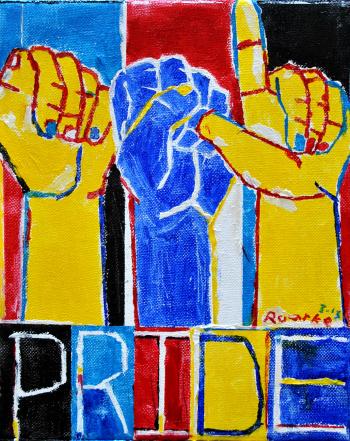According to federal definition, people who are part of the group commonly referred to as deaf and hard of hearing have a disability. Thus, they have the right to accommodations under the Americans with Disabilities Act (ADA) as well as the Rehabilitation Act of 1973 and other pertinent laws.
 However, within this group there are several sub-groups. Among them are those who consider themselves Deaf, with the capital D signifying a cultural identity. These members of the Deaf community do not typically consider themselves to have a disability; rather they consider themselves to be part of strong culturally cohesive community. While not all people who are deaf or hard of hearing identify with the Deaf culture, a significant portion do. Organizations must integrate knowledge of Deaf culture into their policies, practices, and attitudes in order to provide culturally affirmative services to Deaf survivors.
However, within this group there are several sub-groups. Among them are those who consider themselves Deaf, with the capital D signifying a cultural identity. These members of the Deaf community do not typically consider themselves to have a disability; rather they consider themselves to be part of strong culturally cohesive community. While not all people who are deaf or hard of hearing identify with the Deaf culture, a significant portion do. Organizations must integrate knowledge of Deaf culture into their policies, practices, and attitudes in order to provide culturally affirmative services to Deaf survivors.
To understand Deaf culture, it is helpful to consider the definition of culture in general: the values, traditions, norms, customs, arts, history, folklore, institutions, and experiences shared by a group of people who are defined by race, ethnicity, language, nationality, or religion. In the United States, one of the central unifying characteristics of Deaf culture is the use of American Sign Language (ASL). ASL is a language with an established linguistic structure; it is not a different form of English, as many believe (for an illustration of the differences between ASL and English, see Deaf Sexual and Domestic Violence Survivors: Unique Challenges). The use of ASL brings together a disparate group of individuals across the country, essentially creating a medium for shared values, norms, traditions, history, and experiences. This strengthens and emphasizes the linguistic minority status of the Deaf community.
There has been a significant movement in the United States to develop direct, culturally specific services for Deaf survivors of sexual and domestic violence. More than a dozen programs are currently operating across the country and many more are in development. However, since most communities do not have ready access to these programs, hearing advocates continue to have a significant role to play in offering culturally appropriate and linguistically accessible advocacy services to Deaf survivors of sexual and domestic violence.
The following materials provide more in depth information about the Deaf culture and its characteristics. In reading these materials, keep in mind that individual perspectives and definitions will vary. If the information appears to conflict, remember that members of the Deaf community are individuals, and that no definition will necessarily apply to every member of any given group.









